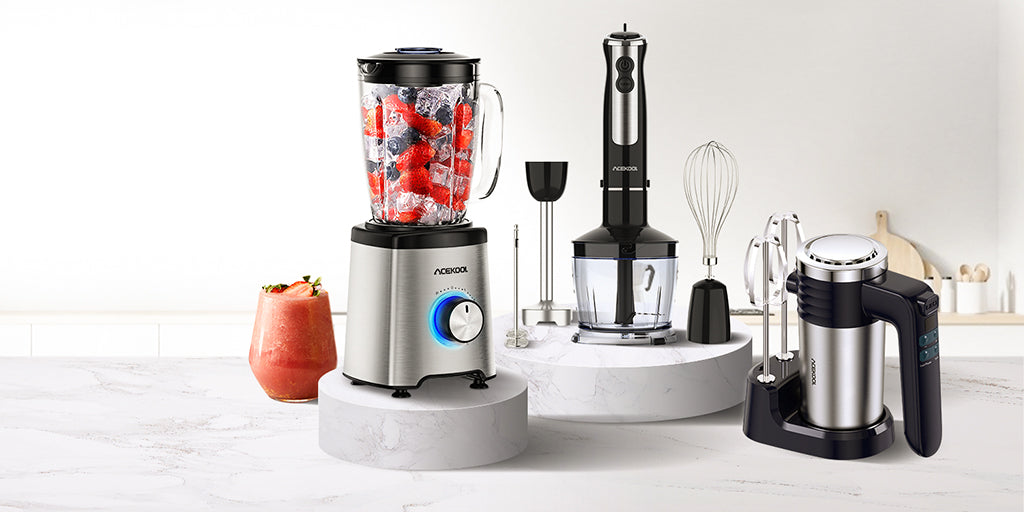
When you think about a sustainable kitchen, the first thing that comes into your mind is eating organically. Though this is the first step of being eco-friendly, if you want to have a truly healthy kitchen, it's also critical to choose sustainable materials for your kitchen appliances, you have to ensure energy-efficient food preparation, and cleaning procedures avoiding chemicals.
Over the years the requirement for a sustainable kitchen has become so popular and so does the need for unsustainable kitchen products. However, even if someone wants to start shopping with great awareness of sustainability, they might not know where to start. Hence, in this article, we’ve compiled a list of kitchen tips for sustainable living to help you get on the right track! Read on.

5 Tips to Consider While Buying Products for a Sustainable Kitchen
Here are some expert tips on choosing the products that could help you make your kitchen eco-friendly.
Buy Energy-efficient Cooktops
Deciding between gas and electric stoves is challenging for most. However, if you want a sustainable option, an induction stove is the best choice, because it is thought to be the most energy-efficient kitchen appliance available. An induction stove generates heat by electromagnetic induction, which causes a current to flow inside pots and other cooking items and only partially consumes power. As a result, natural gas and electrical energy are conserved because the food heats up only when a utensil is placed over the cooktop.
Blenders don't consume a lot of energy. However, the wattage of the blender should be taken into account if you are planning to buy a new one. The higher the wattage, the more energy it uses. It is easy to search for a blender with the right wattage and functionality if you know how frequently you are going to use it. Some blenders even offer multiple functions as well. Acekool Blender CB1 - 2.2L Electric food chopper is one such multi-functional blender. This mini food processor is easy to use for cutting fruits, vegetables, meat, and herbs. You can also opt for Acekool BH1 - 5-in-1 Immersion Hand Blender with a 5-in-1 immersion stick blender set and a wide range of 12-speed settings.
Switch to Kettles
Kettles are among the kitchen's most frequently used appliances, which may surprise you. For your morning coffee, switch to an electric kettle because it significantly lowers your daily electricity usage and saves more energy. Choose a kettle with a measuring scale and a temperature control mechanism that turns the kettle off automatically when the water reaches a boil. Normally, it takes longer to use a stove-top kettle since it requires more energy to run a full burner. On the other hand, an electric kettle uses heat to activate an electric coil that directly boils the water, and with an automated stop button, you have extremely energy-efficient equipment.
Opt for an Energy-saving Oven
There are various electric ovens on the market which promise to cook food better while consuming less energy. To avoid hoarding numerous electrical appliances, you should choose the option that uses less energy, has an effective thermal management feature, and has multiple cooking settings. To maximize kitchen space and energy savings, pair your induction cooktop with an electric oven that also functions as a microwave.
Keep a Dehumidifier in the Kitchen
A dehumidifier in your kitchen can efficiently lower the humidity to a level below which the mold cannot flourish. So, if your kitchen cabinets contain a lot of moisture, think of getting a dehumidifier. By doing this, you stop them from producing the unpleasant musty smell that will give us an untidy feel. To keep your kitchen fresh, consider picking Acekool Dehumidifier DB2 - 35oz Portable Dehumidifier. It effectively reduces humidity in small spaces up to 161 square feet, has LED lights, and because of its portability, you can take it wherever you go.
Compared to conventional appliances, energy-efficient appliances can yield significant energy savings. Avoiding huge appliances to conserve energy, unplugging appliances when not in use, etc are additional energy-saving techniques. Here are some additional tips that will help you turn your kitchen sustainable.
- Choose biodegradable products
- Use green cleaning techniques
- Invest in tools made of stainless steel
- Use LED lights
- Compost and recycling
- Use glass containers for storage
Now that you know the tips to follow to make your kitchen sustainable, you may start following these and implementing them in your cooking space. If you combine it with other zero-waste techniques, you can be sure to have a sustainable life with your family while also helping to protect the environment.

